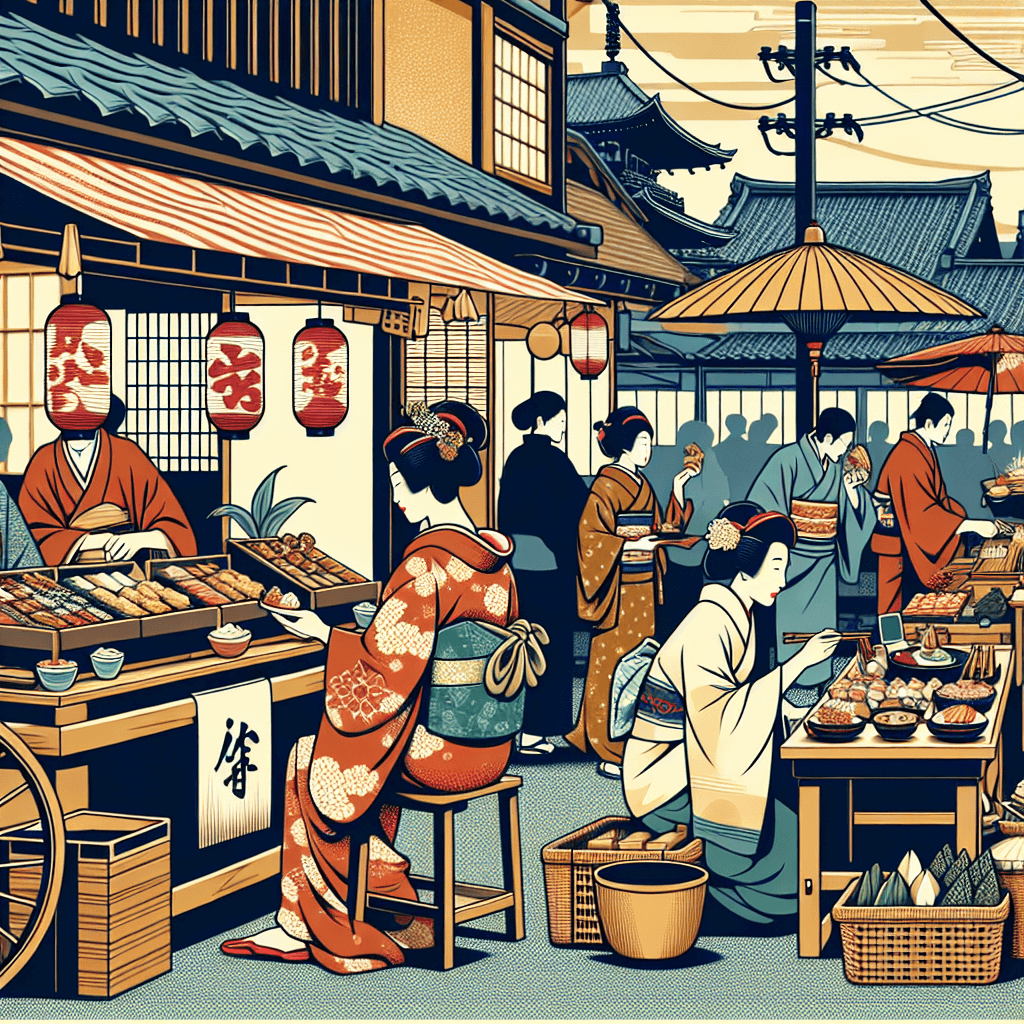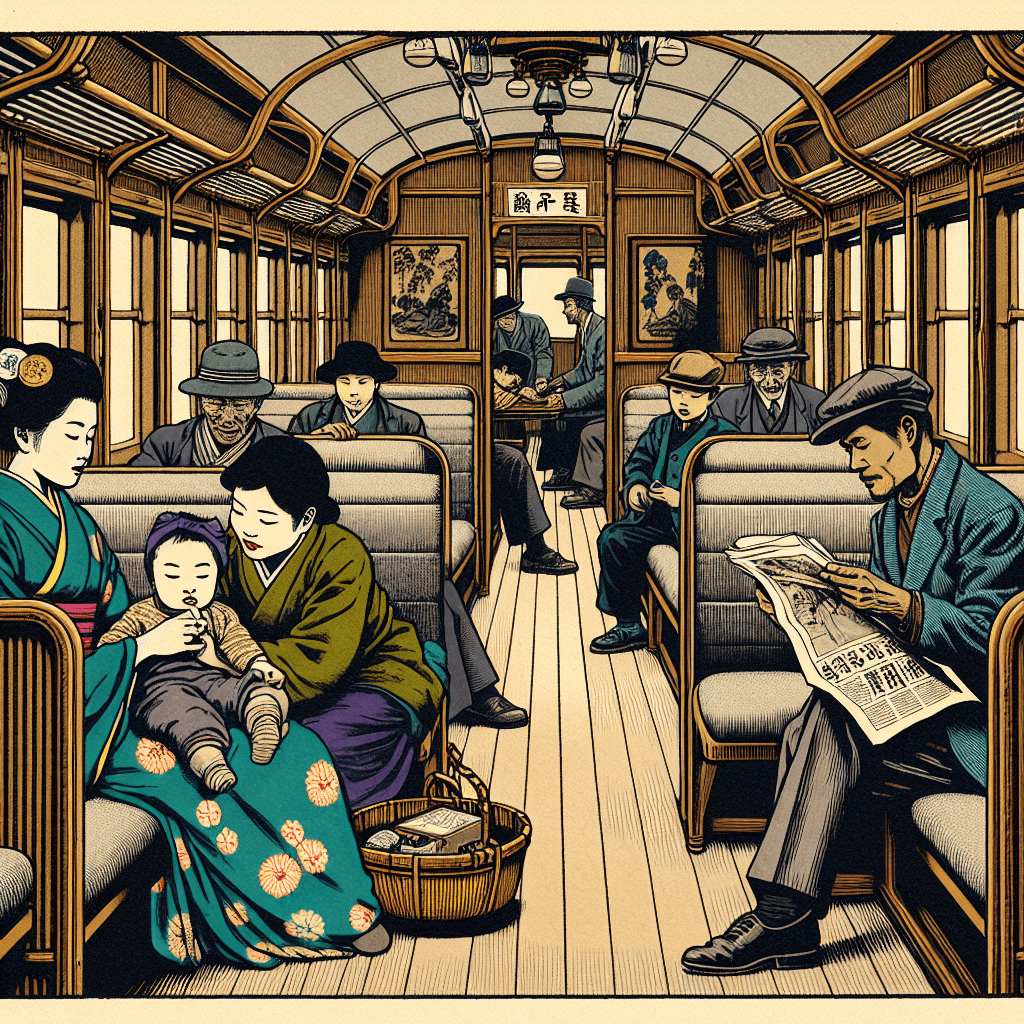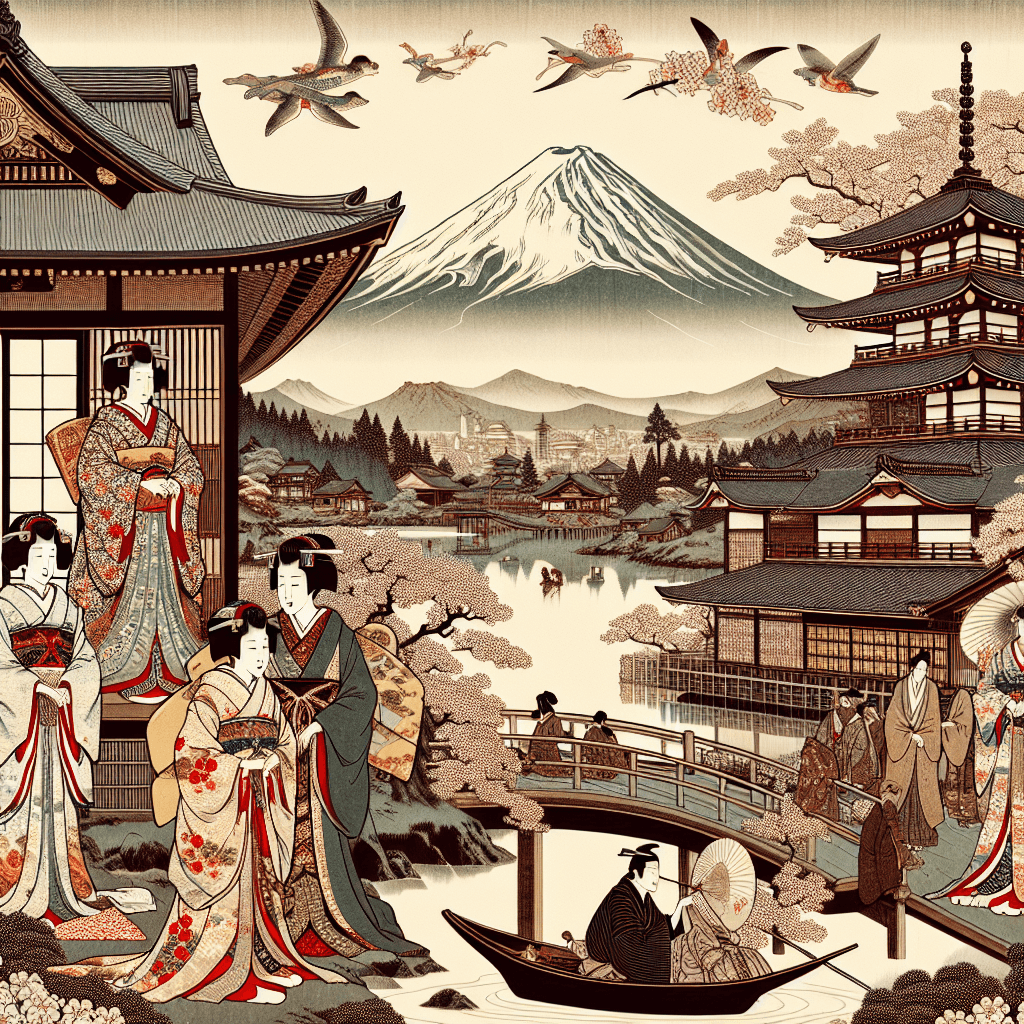A Culinary Journey Through the Edo Period in Japan: From Sushi to Tempura
syndu | Nov. 4, 2023, 11:51 a.m.

A Culinary Journey Through the Edo Period in Japan: From Sushi to Tempura
The Edo period in Japan, spanning from 1603 to 1868, was a time of political stability, economic growth, and vibrant cultural development. This era also witnessed a remarkable evolution in Japanese cuisine, with the introduction of new ingredients and the development of iconic dishes such as sushi and tempura.Sushi, a dish that is synonymous with Japanese cuisine today, underwent significant transformation during the Edo period. The practice of fermenting fish with rice, which originated in Southeast Asia, was adapted in Japan to create narezushi. However, during the Edo period, a new form of sushi, known as haya-zushi, emerged. This variant allowed the rice and fish to be eaten together, a departure from the earlier practice where the rice was discarded. The invention of Edo-style sushi, characterized by the use of fresh seafood, was another culinary innovation of this era.
Tempura, another dish that has come to represent Japanese cuisine worldwide, also has its roots in the Edo period. The technique of deep-frying seafood and vegetables in a light, airy batter was introduced by Portuguese traders and missionaries. This cooking method was embraced by the Japanese and refined over time to create the delicate and crispy tempura we know today.
The Edo period was also a time when the influence of Buddhism on Japanese cuisine became more pronounced.
The Buddhist philosophy of not taking life led to the development of shojin ryori, a vegetarian cuisine that utilized an array of plant-based ingredients. This cuisine, which was initially confined to Buddhist temples, gradually permeated into the mainstream, influencing everyday cooking practices.
The Edo period also saw the introduction of new ingredients from abroad. The Dutch, who were the only Westerners allowed to trade with Japan during the country's period of isolation, brought in ingredients like potatoes, tomatoes, and pumpkins. These ingredients were initially met with skepticism but were eventually incorporated into Japanese cuisine.In conclusion, the Edo period was a pivotal time in the evolution of Japanese cuisine. The dishes that were developed and refined during this era continue to be celebrated in Japan and beyond, a testament to the enduring appeal of this culinary tradition.




